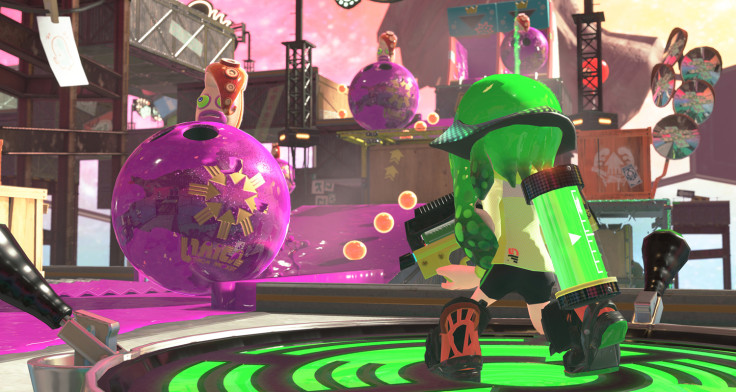Splatoon 2's single-player Hero Mode doesn't offer great changes, but doesn't have to
Hands-on with the single player portion of the anticipated Nintendo Switch shooter.

Two years ago Splatoon won Wii U owners over with a whip-smart concept and moreish multiplayer, but Nintendo's take on the shooter was also home to an excellent single-player campaign that many overlooked.
Not constrained by the demands of creating multiplayer arenas designed to be fair to all eight players in it, Splatoon's single-player was where the game's designers could bring to life the concepts that would never work in competitive spaces.
It also served as the best place for players to get to grips with Nintendo's wild inversion of shooter tropes, which emphasises shooting the environment over shooting foes.
In multiplayer, games are won and lost on the surface area of a map that a team has coated in their colourful ink. The campaign offered something more conventional in which taking out enemies was a must, but it wasn't Call of Duty.
Splatoon's single-player is closer to a platformer, demanding mastery of movement and mechanics introduced piecemeal through each stage. Players may have to face a new enemy, use a new weapon or face a new environmental hazard.
An important aspect of Splatoon's success was its style and the confidence with which it carried itself. This was reflected in the single-player more so than the multiplayer, which was rather bare at launch and later improved with regular updates.
By comparison the campaign felt complete, offering a wealth of challenges and concluding with an incredible final boss fight that tied the game together to create a tiered battle that evoked the adrenaline-pumping thrills of a Platinum Games title.
It's safe to say Splatoon 2 has a lot to live up to, so here's what we think having sampled what the Nintendo's Switch sequel has to offer.
Players will be instantly-familiar with the set-up. The Great Zapfish, which powers the game's central Inkopolis hub area, has been snatched again by those no-good Octarians. This time however there's no Cap'n Cuttlefish calling the shots. Instead it's Squid Sister Marie - one of the TV hosts from the original - who guides the campaign and teases the mysterious disappearance of her missing sister Callie.
The story is silly and barely consequential of course, and certainly isn't the drive of the campaign. What drives it is the challenge, the rewards and the designs of each stage. Each of these levels is roughly five to ten minutes long and many of them are delightful, implementing a design ethos that echoes classic Mario platformers.
Divided up between five hub areas, these stages need to be found and completed before players can fight a boss which unlocks the next area.
Splatoon 2's single-player looks familiar, and is set up in an identical way to its predecessor, but it's still a thrill to play and can be fairly challenging at times. Some may feel disappointed by how similar it all feels to the original, but Nintendo's series is still unique enough to retain its thrill two years later.
As the Squid Sisters might put it, the game still feels fresh.
© Copyright IBTimes 2025. All rights reserved.




















